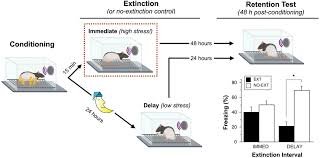- In February, 2024, the Indian Space Research Organisation (ISRO) conducted study using satellite data to identify methane emission hotspots.
- It is a first-of-its-kind effort in India. The study used data from NASA’s Earth Surface Mineral Dust Source Investigation (EMIT) and European Space Agency’s Sentinel-5P TROPOMI.
Major Findings of the Study:
- Around 14% of total carbon emissions in India is related to methane.
- Increase in methane point sources are found over various urban centres in India.
- Worst 3 methane hotspots in India are:
- A Sewage outlet in Central Mumbai
- Ahmedabad’s Pirana landfill
- Surat’s Khajod landfill.
About Methane
- Methane (CH4) is a potent greenhouse gas, with a global warming potential of more than 28 times that of carbon dioxide (CO2) over a 100-year period.
- It is 2nd largest contributor to climate change after CO2.
- It is a short-lived climate pollutant and has a more immediate and intense warming effect on atmosphere.
Impact of Methane
- Worsening Global Warming:
- Fossil fuel operations emit a lot of methane, which is about 80-85 times more potent than carbon dioxide in causing global warming.
- This means cutting down on methane is crucial for fighting global warming and reducing other greenhouse gases.
- Methane is responsible for about 30% of the increase in global temperatures since the Industrial Revolution.
- Creating More Tropospheric Ozone: More emissions lead to more tropospheric ozone, which causes over a million premature deaths each year.
Sources of Methane:
Natural Sources:
- Wetlands: Natural wetlands, such as marshes and swamps, are the largest natural source of methane emissions. These emissions result from the anaerobic decay of organic matter in waterlogged conditions.
- Termites: Termites produce methane as a byproduct of their digestive processes.
- Oceanic Methane Hydrates: Methane hydrates are ice-like structures found in certain ocean sediments. When disturbed, such as by underwater landslides or changes in temperature and pressure, methane can be released into the water and potentially into the atmosphere.
Anthropogenic Sources:
- Agriculture: Enteric fermentation in the digestive systems of ruminant animals (such as cows, sheep, and goats) is a significant source of methane. Manure management, including storage and processing, also emits methane.
- Landfills: Decomposing organic waste in landfills produces methane in an anaerobic environment.
- Fossil Fuel Production and Use: Extraction, processing, and transportation of fossil fuels (coal, oil, and natural gas) can result in methane emissions. Methane is also released during the combustion of fossil fuels.
- Wastewater Treatment: Anaerobic decomposition of organic matter in sewage treatment plants produces methane.
- Rice Cultivation: Methane is produced in flooded rice paddies due to anaerobic decomposition of organic matter in the soil.
- Biomass Burning: Incomplete combustion of biomass, such as forests or agricultural waste, can release methane along with other greenhouse gases.
- Wildfires: Like biomass burning, wildfires can release methane as part of the combustion process.
Initiatives to Mitigate Methane Emissions:
Global Initiatives:
- Methane Alert and Response System (MARS): MARS will utilize satellite data to detect methane emissions worldwide, allowing relevant stakeholders to take prompt action upon notification.
- Global Methane Pledge: At the 2021 Glasgow climate conference (UNFCCC COP 26), around 100 countries pledged to reduce methane emissions by at least 30% by 2030, compared to 2020 levels. However, India has not joined this pledge.
- Global Methane Initiative (GMI): An international partnership aimed at overcoming obstacles to methane recovery and utilization as a clean energy source, promoting sustainability on a global scale.
- In a study published in the journal PLUS ONE in 2021, it was discovered that incorporating seaweed into cow feed can lead to a reduction of over 80% in methane formation within their digestive systems.
India’s Initiatives:
- Development of ‘Harit Dhara’ (HD): The Indian Council of Agricultural Research (ICAR) has introduced ‘Harit Dhara’ (HD), a feed supplement designed to decrease cattle methane emissions by 17-20% while also potentially increasing milk production.
- India Greenhouse Gas Program:
- Led by World Resources Institute (WRI) India, Confederation of Indian Industry (CII), and The Energy and Resources Institute (TERI), this voluntary initiative aims to measure and manage greenhouse gas emissions in industries.
- It focuses on developing strategies to reduce emissions, fostering more profitable and sustainable business practices in India.
- The Gobar (Galvanizing Organic Bio-Agro Resources) Dhan scheme focuses on waste conversion into resources, thereby mitigating methane emissions.
- The National Biogas and Manure Management Program facilitates the capture and utilization of methane emissions from organic waste sources.
- National Action Plan on Climate Change (NAPCC): Launched in 2008, NAPCC aims to raise awareness among various stakeholders about the dangers of climate change and strategies to combat it.
- Adoption of Bharat Stage-VI Norms: India has transitioned from Bharat Stage-IV (BS-IV) to Bharat Stage-VI (BS-VI) emission standards, representing a commitment to reducing vehicular emissions.
- Since 2014, the National Livestock Mission has incorporated the practice of providing balanced rations to livestock, which has been identified as a measure that can contribute to the reduction of methane emissions from livestock.
What more can be done to reduce Methane emissions
- Farmers have the opportunity to enhance animal nutrition, fostering larger, healthier, and more productive livestock, thereby achieving increased output with reduced resources.
- Additionally, scientists are exploring alternative feed options to mitigate methane emissions from cows, alongside strategies for more efficient manure management, such as covering, composting, or utilizing it for biogas production.
- In terms of staple crops like paddy rice, experts advocate for alternate wetting and drying methods that have the potential to significantly decrease emissions.
- Instead of maintaining continuous flooding in fields, paddies could be subjected to irrigation and drainage cycles two to three times throughout the growing season.
- This approach not only curtails methane production without compromising yield but also reduces water usage by one-third, rendering it a more cost-effective solution.




